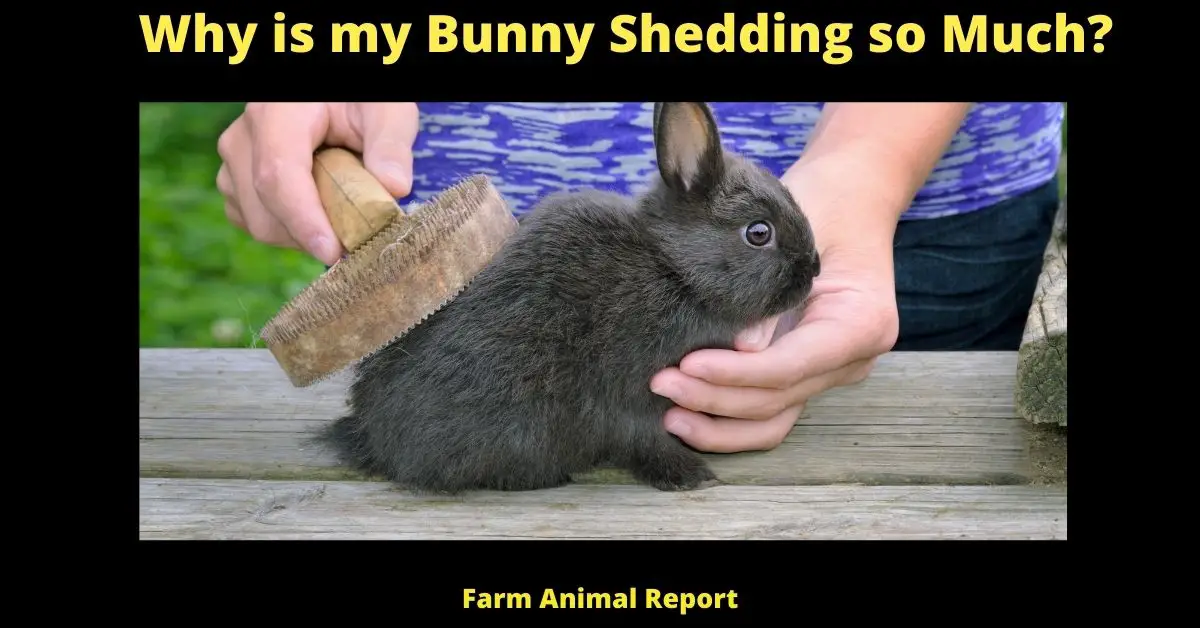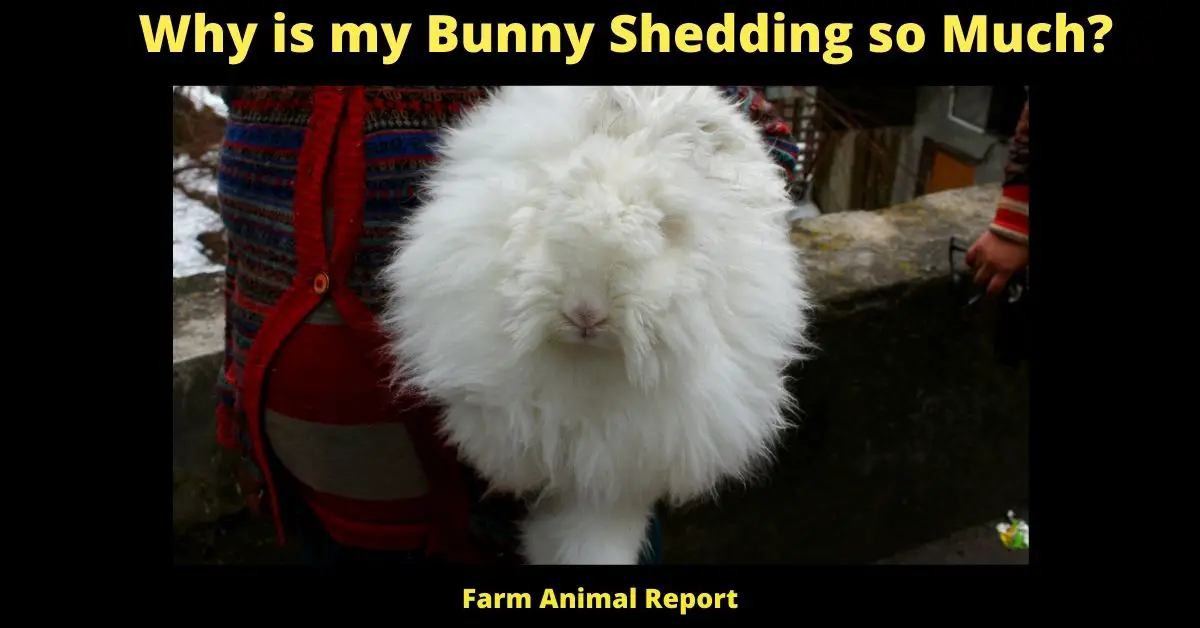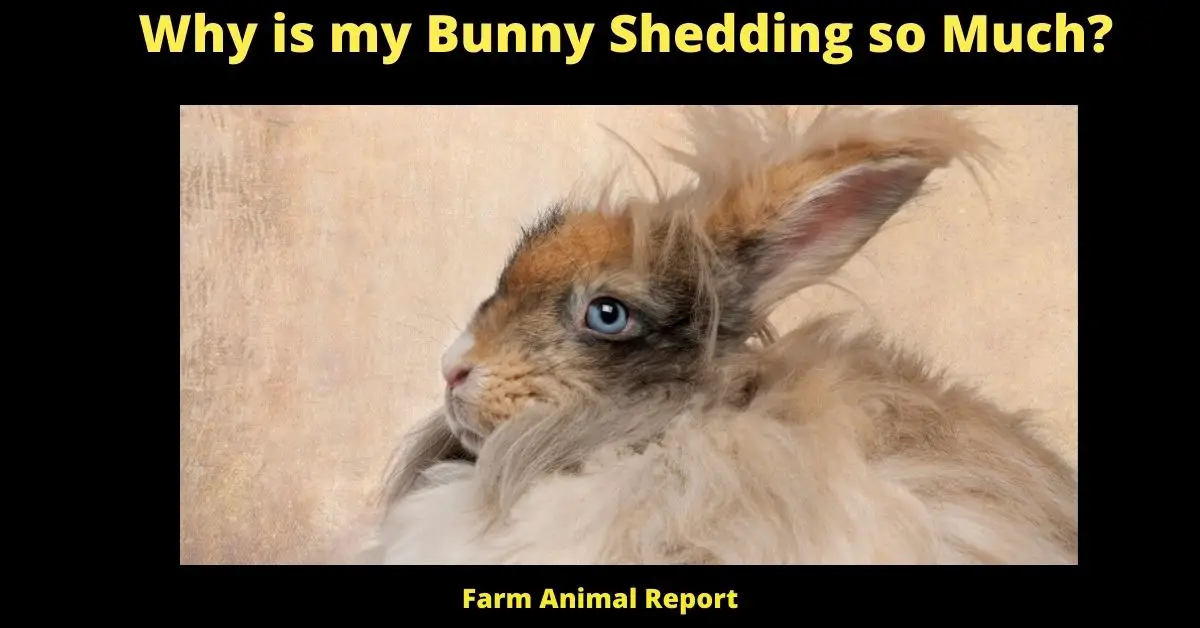Bunnies shed naturally making room for new hair. Other Reasons are Seasonal weather gets colder, Hormonal, Doe’s going into heat, illness and parasites can cause excessive shedding.
Why is my Bunny Shedding so Much?
If you have a bunny, then you may be wondering why it is shedding so much. This is a common question among bunny owners, and there can be several reasons why your bunny is shedding more than usual. In this blog post, we will discuss the most common reasons for excessive shedding in bunnies, and we will provide tips on how to help stop the shedding. Why is my Bunny Shedding so Much?
What is a Rabbit Shed?
A rabbit shed is a natural occurrence that all rabbits go through. It is when they lose their old hair and grow in new hair. This usually happens twice a year, but can vary depending on the breed of rabbit and the environment it lives in.
See Amazons Educational Resources on Rabbit Diseases
Some rabbits do not shed as much as others. There are some breeds of rabbits that are considered hypoallergenic because they don’t shed as much hair. If you are considering getting a rabbit and you have allergies, it is important to research the different breeds to find one that will be best for you. Jump to 18 Ways to Make Money by Rabbit Farming **CHARTS**
There are also ways to help reduce the amount of hair your rabbit sheds. One way is to groom your rabbit regularly. This will help remove any loose hair and keep their coat healthy and shiny. You can also try changing your rabbit’s diet. A diet high in fiber can help reduce the amount of hair they lose. Why is my Bunny Shedding so Much?

What is Bunny Shedding and Why does it happen?
Bunny shedding is a natural process that all bunnies go through. It’s called “shedding” because the bunny loses old hair in order to make way for new hair. The amount of fur a bunny sheds depends on several factors, including age, health, and breed.
Shedding typically starts when the bunny is around three months old and continues until the bunny reaches about six months old. After that, shedding slows down but may continue occasionally throughout the rabbit’s life.
- Seasonal weather gets colder
- Hormonal Changes
- Going into Heat
- Sick
- Parasites
- Stressed out
- Skin Irritations
- Mites
What are the Symptoms of Excessive Bunny Shedding?
If you are noticing that your bunny is shedding more than normal, there are a few things you can look for to determine if the shedding is excessive. Excessive shedding can be caused by a variety of factors, such as diet, environment, or health problems. If your bunny is healthy and has a good diet, the most common causes of excessive shedding are environmental factors such as stress or changes in temperature.
Some signs that your bunny may be experiencing excessive shedding include:
- The increased amount of hair on surfaces around the cage or home
- More hair in the food bowl or water bottle – Clumps of hair on the floor or furniture
- Bald patches on the body where fur has been lost
- Bunny is constipated with Hair from Grooming
What are the Treatments for Excessive Bunny Shedding?
- Humidity
- Regular Baths
- Brushing Hair
- Flea Comb
- Pluck Rabbits fur
What are the Rabbit Breeds More prone to Bunny Shedding?
There are a number of rabbit breeds that tend to shed more than others. The Rex breed, for example, is known for its heavy shedding. Other breeds that tend to shed more include the Angora, Jersey Wooly, and Belgian Hare. If you are allergic to pet dander, it may be wise to avoid these breeds altogether.
If you are looking for a rabbit that doesn’t shed very much, consider the Holland Lop or Dutch. These breeds are known for their minimal shedding. Alternatively, you could opt for a mixed breed rabbit, which will likely have less of a tendency to shed than any one specific breed.
No matter what breed of rabbit you choose, be sure to groom it regularly in order to help keep excessive shedding under control. Good brushing can go a long way towards minimizing hairballs and keeping your bunny looking its best!
Do Baby rabbits lose their Baby Fur?
It is a common misconception that baby rabbits lose their baby fur. In fact, they keep their baby fur until they are about four months old. At around four months old, the babyfur will start to be replaced by adult fur. This process is called molting. Molting occurs when the rabbit’s body sheds its old skin cells and replaces them with new ones. During this time, the rabbit’s hair may also fall out in patches. Don’t worry though – the new hair will grow back!
Molting usually lasts for about two weeks, but it can take up to six weeks for all of the new hair to grow back in. While your bunny is molting, you may want to give her a little extra TLC. Make sure she has plenty of fresh water and food, and offer her a soft place to sleep. You may also want to groom her regularly to help keep the new hair healthy and shiny.
Are there Breeds of Rabbits that do not Shed – Hypoallergenic?
There are a few breeds of rabbits that are considered hypoallergenic. These breeds include the Netherland dwarf, the English angora, and the American fuzzy lop. All of these breeds have shorter fur than other rabbit breeds and they also produce less dander. Dander is the main cause of allergic reactions to rabbits.
If you are looking for a non-shedding, hypoallergenic breed of rabbit, these three breeds are good options. However, keep in mind that no breed of rabbit is 100% non-shedding or hypoallergenic. Some people may still have an allergic reaction to these breeds, but they will typically be less severe than with other rabbit breeds. So if you are considering getting a rabbit and you are allergic to them, it is worth considering one of the hypoallergenic breeds. Just be aware that even these breeds may not be perfect for everyone with an allergy to rabbits.

Final Thoughts – Why is my Bunny Shedding so much?
If you are looking for a non-shedding breed of rabbit, there are a few options available. The Netherland dwarf, English angora, and American fuzzy lop all have shorter fur than other rabbit breeds and they also produce less dander. Dander is the main cause of allergic reactions to rabbits. So if you are looking for a non-shedding breed that is also considered hypoallergenic, these three breeds are good options. However, keep in mind that no breed of rabbit is 100% non-shedding or hypoallergenic. Some people may still have an allergic reaction to these breeds, but they will typically be less severe than with other rabbit breeds.





